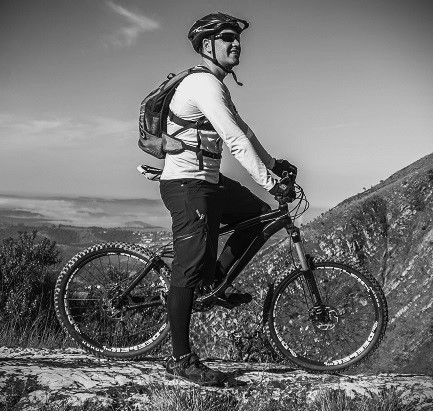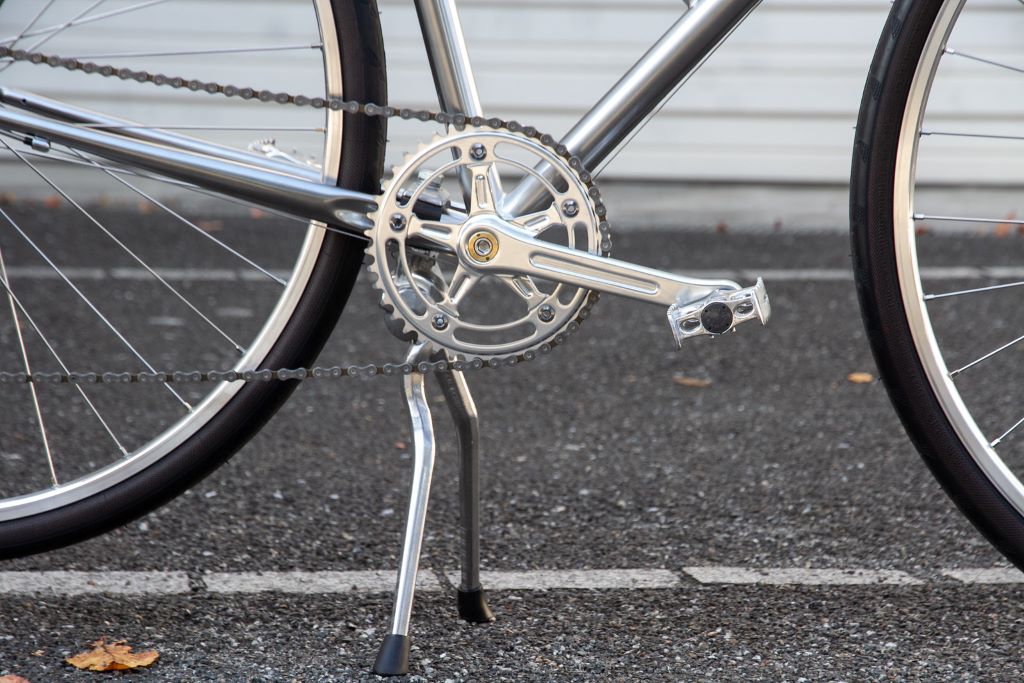For many seasoned mountain bikers, the humble kickstand is considered anathema. It’s often seen as a clunky, unnecessary appendage that adds weight and can rattle during rough descents. Yet, the question of how to securely park a mountain bike without one remains a pertinent one, especially for casual riders or those seeking practical solutions for trailside stops. This article delves into the various mountain bike kickstand alternatives to a traditional kickstand, exploring their functionality, benefits, and drawbacks, while offering practical advice for choosing the best option for your riding style.
The Case Against the Kickstand: Why Mountain Bikers Often Shun It
The aversion to kickstands within the mountain biking community stems from several factors. Primarily, they add weight, which is a crucial consideration for performance-oriented riders. Every extra gram can impact climbing efficiency and overall agility. While recumbent bike advantages for riders often center on comfort and aerodynamics, mountain bikers tend to prioritize minimal gear and maximum maneuverability, making additional accessories like kickstands less desirable.
Furthermore, kickstands are prone to rattling and can even break during demanding trails, potentially causing damage to the bike or posing a safety hazard. Their aesthetic clash with the sleek, minimalist design of modern mountain bikes also contributes to their unpopularity. Finally, the terrain encountered on trails often makes a kickstand ineffective. Uneven ground, loose rocks, and soft soil provide unstable surfaces, rendering the kickstand useless and potentially leading to the bike tipping over.

Alternative Parking Solutions: Leveraging the Environment
The most fundamental and readily available mountain bike kickstand alternatives is to utilize the natural environment. Finding a suitable tree, rock, or sturdy fence post to lean your bike against is a common practice. This method requires no additional equipment and is entirely free. However, it’s essential to exercise caution. Ensure the chosen support is stable and won’t damage your bike’s paint or components. Leaning the bike against a tree with rough bark, for instance, could scratch the frame. Furthermore, consider the angle of the lean to prevent the bike from rolling or toppling over. This approach is best for short stops and requires a keen eye for suitable surroundings.
The Art of the “Trailside Prop”: Balancing and Positioning
For more controlled stops, mastering the art of the “trailside prop” is crucial. This involves carefully positioning the bike against a slightly elevated surface, such as a rock or a small embankment, to maintain balance. The bike’s tires should be firmly planted, and the handlebars should be turned slightly to create a stable tripod effect. This technique requires practice and a good understanding of your bike’s balance point. It’s particularly useful for quick stops to adjust gear, take photos, or have a brief rest. However, it’s not foolproof and may not be suitable for extended periods or in windy conditions.
Wall Mounts and Bike Racks: Home Storage and Transportation Solutions
While not directly applicable on the trail, wall mounts and bike racks are essential for home storage and transportation. Wall mounts provide a secure and space-saving way to store your bike indoors. They come in various designs, from simple hooks to elaborate stands that allow for maintenance and cleaning. Bike racks for vehicles, whether hitch-mounted or roof-mounted, offer a safe and convenient way to transport your bike to and from trailheads. These solutions eliminate the need for a kickstand when the bike is not in active use, ensuring it’s protected and readily accessible.
Specialized Bike Stands: Portable and Adjustable Options
For riders seeking a more dedicated and portable solution, specialized bike stands offer a range of options. These stands are designed to be lightweight and compact, making them easy to carry in a backpack or vehicle. Some models feature adjustable legs to accommodate uneven terrain, while others utilize a simple folding mechanism for quick setup and takedown. These stands are particularly useful for maintenance tasks on the trail, such as fixing a flat tire or adjusting the drivetrain. They provide a stable platform that elevates the bike, allowing for easier access to components.
The “Click-Stand” and Similar Solutions: Compact and Lightweight Support
The “Click-Stand” is a popular aftermarket accessory that provides a lightweight and compact alternative to a traditional kickstand. It consists of a series of interconnected rods that fold into a small package. When assembled, it forms a tripod-like support that props up the bike. This solution is particularly appealing to riders who prioritize weight savings and portability. Similar products use a variety of folding designs to provide a stable support. These portable stands are designed to be used in conjunction with a part of the bike, typically the rear triangle or a part of the frame, to provide the leverage and support.
Using a “Bike Leash” or “Bike Tie”: Securing Your Ride Temporarily
A bike leash or tie is a simple and effective way to secure your bike temporarily. These devices, often made from elastic or durable webbing, allow you to tether your bike to a tree, fence, or other sturdy object. This prevents the bike from rolling or falling over, especially in windy conditions or on uneven terrain. Bike leashes are lightweight and easy to carry, making them a practical addition to any rider’s toolkit. They are especially useful for quick stops in areas where leaning the bike is not feasible.
DIY Solutions: Creativity and Resourcefulness
For resourceful riders, DIY solutions offer a creative and cost-effective way to address the kickstand dilemma. Utilizing readily available materials, such as PVC pipes, wooden dowels, or even repurposed tent poles, it’s possible to create custom bike stands or supports. These DIY projects allow for personalized designs that cater to specific needs and preferences. However, it’s essential to ensure the materials are durable and the design is stable to prevent damage to the bike.
The Importance of Bike Maintenance and Inspection: Preventing Accidental Falls
Regardless of the chosen parking solution, regular bike maintenance and inspection are crucial for preventing accidental falls. Ensure all components are properly tightened and functioning correctly. Check the tires for adequate pressure and inspect the frame for any signs of damage. A well-maintained bike is less likely to tip over or experience unexpected issues that could lead to instability.
Choosing the Right Alternative: Considering Your Riding Style and Needs
The best alternative to a kickstand depends on your riding style, needs, and preferences. For casual riders who prioritize convenience, a portable bike stand or a simple bike leash may be sufficient. Performance-oriented riders who prioritize weight savings may opt for a minimalist approach, relying on environmental supports and trailside prop techniques. Riders who frequently stop for maintenance or photography may find a specialized bike stand to be invaluable. Ultimately, the chosen solution should be practical, reliable, and compatible with your riding habits.
People Also Ask (FAQs):
Q: Is it really bad to have a kickstand on a mountain bike?
A: It’s not inherently “bad,” but it’s generally considered less desirable due to added weight, potential for rattling, and incompatibility with challenging terrain.
Q: Can I use a regular kickstand on a full-suspension mountain bike?
A: It’s generally not recommended. The frame geometry of full-suspension bikes often makes it difficult to install a traditional kickstand, and the rear suspension can interfere with its operation.
Q: What is the lightest alternative to a kickstand?
A: Relying on natural supports like trees and rocks, or mastering the trailside prop, are the lightest options as they require no additional equipment. The “Click-Stand” is a light portable option.
Q: How do I store my mountain bike without a kickstand?
A: Wall mounts and bike racks are excellent for home storage. You can also lean your bike against a wall or use a floor stand.
Q: Are there any kickstands made specifically for mountain bikes?
A: While less common, there are some aftermarket kickstands designed for specific mountain bike models or frame types. However, they are still generally not favored by serious mountain bikers.
Conclusion: Embracing Practicality and Adaptability
While the traditional kickstand may not be the ideal solution for mountain bikers, a plethora of innovative mountain bike kickstand alternatives exist. By embracing practicality and adaptability, riders can find the perfect solution for their needs. Whether it’s mastering the trailside prop, utilizing portable bike stands, or leveraging the environment, the key is to prioritize stability and convenience. Ultimately, the choice of parking solution reflects the rider’s individual style and commitment to the mountain biking experience.

Welcome to outdoorxsports.com! I’m Russell, your guide to the awesome world of mountain biking. This blog is all about building a community of riders who love to share their passion for the sport. Expect inspiring stories, local trail recommendations, fun challenges, and tips for making the most of your time on two wheels.

